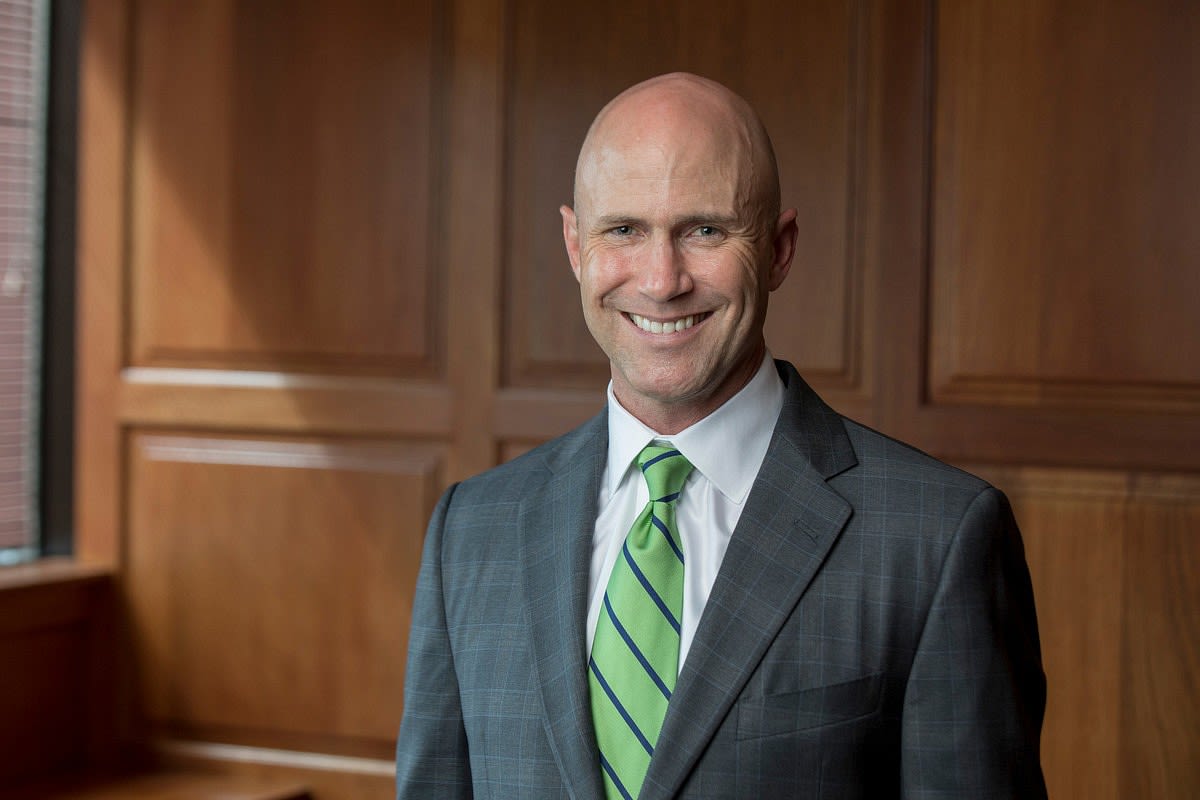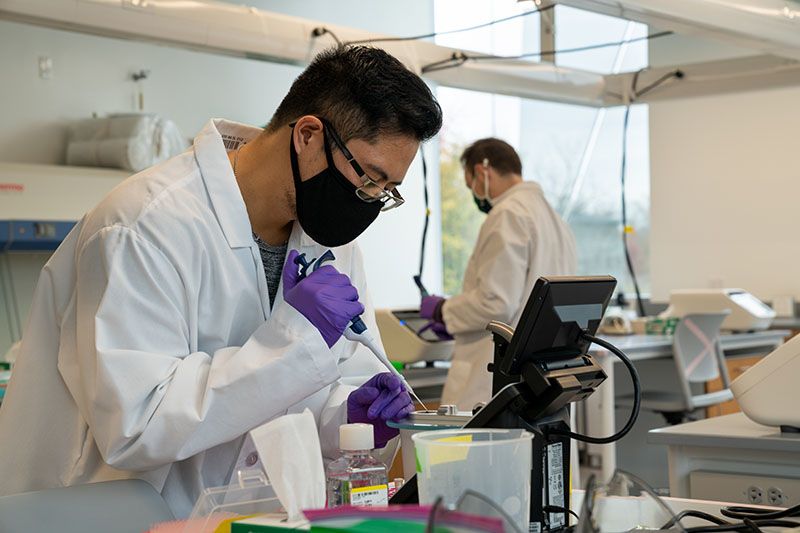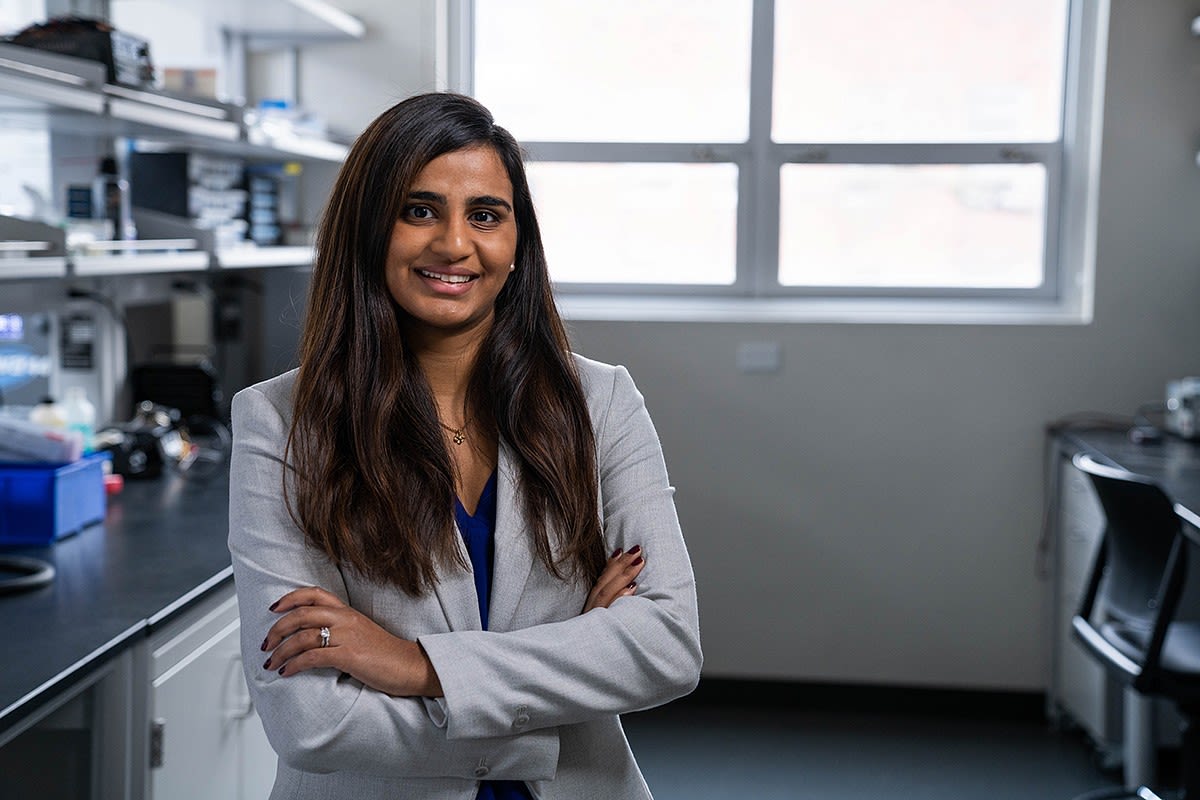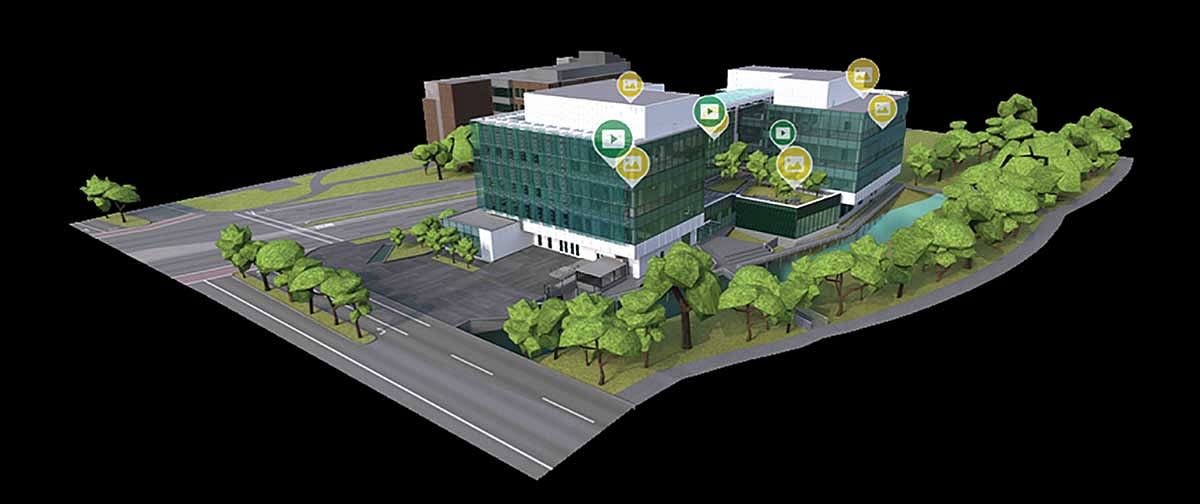University of Oregon Receives Second $500 Million Gift for the Phil and Penny Knight Campus for Accelerating Scientific Impact

The gift from Penny and Phil Knight will fund the next phase of the new campus, enabling the University of Oregon to further expand its bioengineering and applied scientific research and training with additional students, faculty members and a second building.
The University of Oregon recently announced a second $500 million gift from Penny and Phil Knight, launching the next phase of its state-of-the-art research campus bearing their names.
With this gift, the University of Oregon’s Phil and Penny Knight Campus for Accelerating Scientific Impact will further expand its strengths in bioengineering and applied scientific research and training, creating new opportunities for additional students, adding faculty positions and funding a second building.
Launched in 2016 with the first $500 million gift from the Knights, the campus embodies a new paradigm for scientific inquiry that accelerates the cycle of translating scientific discoveries into solutions that create societal impact. The Knight Campus stands as a prime example of how private philanthropy is redefining the university for generations to come.
Thanks to the inspiration of our donors, led by the magnificent and record-breaking gifts of Penny and Phil Knight, and the passion of our faculty to make the world a better place, the Knight Campus has forever transformed the University of Oregon and the state of Oregon. The work that will take place at the Knight Campus will improve people’s lives directly through innovative treatments and devices, and indirectly through company formation, jobs and economic development.
“This second $500 million gift accelerates our drive to greater heights of excellence, forging partnerships with other great universities, and creating incredible opportunities for students,” Schill said. “It further secures our position as a global university, a destination for discovery, a hub of innovation and a place of progress and answers. At the same time, equity is built into our graduate programs and who we will hire. Words cannot adequately express our gratitude for the Knights’ faith in the University of Oregon, so we will need to demonstrate our thanks through the pace and passion of our work.”
The new gift is an overwhelming vote of confidence in what the Knight Campus has already been able to achieve in less than five years, according to Robert E. Guldberg, vice president and Robert and Leona DeArmond Executive Director of the Knight Campus.

The combination of engineering, science, business and medicine is where the magic happens, and that’s what we are already witnessing at the Knight Campus. This gift allows us to achieve our larger vision in a very compressed timeline. What would take other institutions decades to achieve is happening here in just a matter of years.
“Our goal is to dramatically shorten the timeline between discovery and societal impact through world-class research, training and entrepreneurship in a nimble scientific enterprise. The vision of a campus focused on science that impacts society is resonating with so many people. We are incredibly grateful to the Knights for their unbelievable support to continue the momentum towards that vision,” said Guldberg.
The first phase of the Knight Campus is already attracting top scientists, physicians, and engineers who are leading innovations and creating important public-private partnerships. First-of-their-kind technologies created by Knight Campus faculty have established high-resolution 3D-printing methods with the potential to make advanced medical implants. These versatile materials have potential applications throughout the body, such as artificial blood vessels and dental implants, bone and tendon repairs, and nerve regeneration. Other recent innovations include sensors that allow doctors to monitor the progress of bone regeneration in trauma patients, new methods of designing proteins to treat disease and synthesizing genes to fight disease, as well as new strategies to deliver proteins to repair damaged tissues.
A microtube 3D-printed with melt electrowriting, seen under an electron microscope.
“At the heart of the Knight Campus are the innovation-minded students and faculty we are recruiting as well as cross-disciplinary partnerships, which are essential to solving society’s most challenging problems and build on the longstanding culture of collaboration at the University of Oregon. The future of scientific innovation in Oregon is extremely bright,” said Guldberg.


"Even in my short time here, the evolution of the Knight Campus has been extraordinary, as we pursue science that helps people. Thank you Mr. and Mrs. Knight for your investment and belief in us. Today, we celebrate not only how far we’ve come, but also how much further we will go, as we accelerate our efforts to help more people, sooner, reshaping not only discovery but also modern medicine." - Marian Hettiaratchi, Assistant Professor, Knight Campus
"Even in my short time here, the evolution of the Knight Campus has been extraordinary, as we pursue science that helps people. Thank you Mr. and Mrs. Knight for your investment and belief in us. Today, we celebrate not only how far we’ve come, but also how much further we will go, as we accelerate our efforts to help more people, sooner, reshaping not only discovery but also modern medicine." - Marian Hettiaratchi, Assistant Professor, Knight Campus
A NEW BUILDING, FACULTY AND PROGRAMMING
The $500 million gift enables the Knight Campus to shift into phase two of its planning process, which includes a second building for research and innovation. The current plan is for a 175,000-square-foot, multi-story bioengineering and applied science research building to support expanded research programs and facilities. The second building is slated to be built north of the first Knight Campus building, on two acres along Riverfront Research Parkway. It will create new core research facilities and flexible lab spaces that support bioengineering and applied science research. Portland-based ZGF Architects has been selected for programming and concept design services.
In addition to funding design and construction, the gift will support faculty, academic and innovation programming, as well as support operations through an endowment. The next phase calls for 14 to 16 additional faculty members and their teams in bioengineering, regenerative medicine, biomedical data science, and other applied interdisciplinary sciences to lead research programs, bringing the total number of Knight Campus tenure-related faculty to 30.
Knight Campus faculty members are implementing world-class curricula that not only introduce students to the knowledge and tools of their scientific trade, but also inspire entrepreneurship, develop communication skills, and strive to make science and engineering more inclusive for all. The Knight Campus also encourages and supports its researchers in their efforts as academic entrepreneurs to develop inventions, file patents, sign license agreements and start new companies.
Over the coming decade, the Knight Campus will train hundreds of postdoctoral scholars and students to become the next generation of engineering and applied citizen-scientists.
Every year, the Knight Campus enrolls 80 to 100 students who are pursuing master’s degrees while specializing in areas of materials science, bioinformatics and genomics, with an emphasis on hands-on training. This fall, the Knight Campus bioengineering doctoral program, a joint effort with Oregon State University, will grow to nearly 20 doctoral students. Also this fall, the Knight Campus will launch a minor in bioengineering, the first undergraduate program in the Knight Campus and the UO’s first undergraduate engineering offering. The minor has been designed to complement the work of STEM majors in biology, chemistry and biochemistry, human physiology, and physics.

The Knight Campus in Mixed Reality
Experience the Knight Campus in 360-degree detail through the mobile app.
This content was paid for and created by University of Oregon. The editorial staff of The Chronicle had no role in its preparation. Find out more about paid content.





